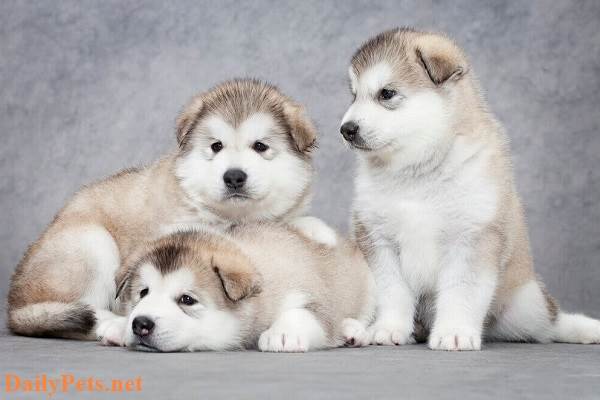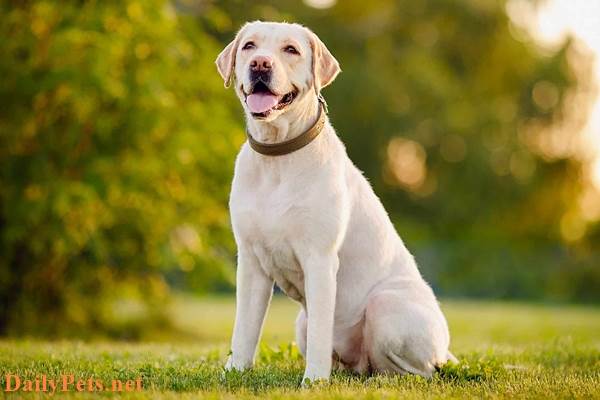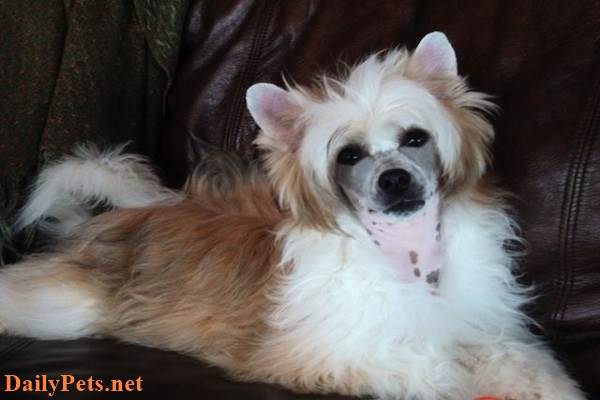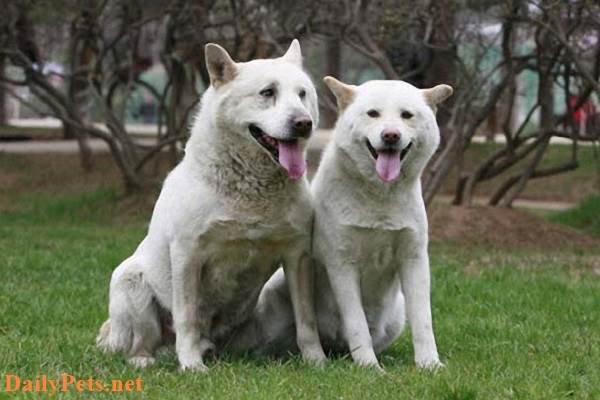They are one of the oldest dog breeds in the world, with minimal changes in their original shape and size. The Giant Alaskan Malamute was selectively bred for size, with some exceeding 100 pounds.
These dogs are Giant athletic breeds that crave leadership and high levels of activity to avoid boredom. They have a long history of being used to haul heavy freight across Alaska and are capable of pulling loads up to ten times their body weight. They were also used for hunting seals and bears.

Giant Alaskan Malamute Dog.
The Giant Alaskan Malamute can resemble more of a cross between a wolf and a bear than a typical dog. They have a thick double coat that helps them withstand Alaska’s harsh temperatures. These dogs are not recommended for beginners or first-time pet owners due to their independent nature combined with their intelligence, making them somewhat challenging to handle.
History and Origins of the Giant Alaskan Malamute
The exact origins of the Giant Alaskan Malamute are unclear, but they are one of the oldest known dog breeds in the world. They lived among the Inuit people and were used as sled dogs in the Arctic, as well as for hunting polar bears and seals. They are believed to have crossed Siberia to Alaska, accompanying native people for centuries.
The Alaskan Malamute was first recognized in the 1700s when explorers encountered settlements and named them after a tribe known as the Mahlemuts, who resided on the Seward Peninsula. The tribe used these dogs to pull heavy sleds carrying food and essential supplies, as well as for hunting and guarding purposes.
In 1896, the gold rush brought many cold-weather dog breeds to Alaska, where they interbred with native dog breeds. However, the Malamute, being a separate tribe, prevented the widespread hybridization of the Giant Alaskan Malamute, thus preserving the purity of the native breed.
Various breeding programs led to the development of different Malamute strains, some known as the Kotzebue and M’loot strains. These dogs were used in both World Wars as sled dogs. Most modern Malamutes trace their lineage back to the Kotzebue strain.
The general public became more familiar with Alaskan Malamutes through the “Balto” story, where a heroic dog transported medicine to villages to prevent a diphtheria outbreak. Many such dog teams, including male dogs, were used for such purposes. They were also used in polar exploration.
Physical Characteristics of the Giant Alaskan Malamute
The Giant Alaskan Malamute lives up to its name, being truly massive. Male Giant Alaskan Malamutes typically stand between 30 to 35 inches in height and weigh 150 to 200 pounds. Female Giant Alaskan Malamutes are usually slightly smaller in size than the males.
The accepted standard for a regular-sized Malamute is up to 25 inches in height and no more than 85 pounds in weight. Due to the significant size difference, Giant Alaskan Malamutes are not allowed to participate in dog shows and performance events.
The primary difference between a standard Malamute and a Giant Malamute is their size.
The Giant male Alaskan Malamutes often have a thick double coat in black, brown, or gray with distinctive white markings on their face, crown, and muzzle. Their tails are thick and bushy. These dogs have deep amber-brown eyes, unlike smaller Malamutes that often have blue eyes.
Their coat colors can also include red, seal, and sable. They have a broad chest to support their pulling efforts and a straight tail. Their thick double coat helps them adapt to cold environments, and they can grow up to 2 inches long. These dogs shed seasonally and more than most dog breeds throughout the year.
Personality Traits of the Giant Alaskan Malamute
Despite their intimidating size, Giant Alaskan Malamutes are known for being very affectionate and loyal. They are territorial and protective when it comes to their family and resources.
They can be possessive and aggressive about food if not trained properly from a young age. This trait was essential for their ancestors’ survival. As such, they may not be suitable for small children who may not understand or respect their boundaries.
Their large size makes them less suitable for homes with small children, as they may inadvertently knock them over. They are better suited as the only pets in a household due to their protective and territorial nature.
Their hunting instincts can make them chase smaller animals like cats. They are also known to engage in dominance battles with other male dogs to establish alpha status within their pack, which can occasionally extend to interactions with other dogs. Therefore, they are best kept as the only pets.
Giant Alaskan Malamutes are suitable for active families because these intelligent dogs tend to get easily bored if not mentally and physically stimulated. They enjoy playing with their humans and engaging in adventures. Their development thrives on love and attention from humans.
These dogs can become anxious when left alone for extended periods, as they always need to be close to their humans. They express boredom and separation anxiety through howling and destructive behaviors.
Alaskan Malamute Giant puppies
Alaskan Malamute Giant puppies are adorable, with their fluffy coats and sweet temperament. It can be challenging to find reputable breeders for these puppies because there aren’t as many people breeding Giant Malamutes. The standard size for Alaskan Malamutes is already quite large, so there may not be a significant demand for breeding Giants. However, occasionally, a Giant Malamute puppy may be born to parents of standard size.

Alaskan Malamute Giant puppies.
Giant Alaskan Malamute puppies develop extremely slowly and don’t reach their maximum size until they are three years old. As Giant dogs, Giant Malamute puppies are prone to hip and elbow dysplasia, so parents should be tested for these issues before breeding.
When choosing a Giant Alaskan Malamute puppy, observe their temperament and select the one that best suits your family. Ensure the puppy is healthy by checking indicators like bright eyes, no discharges from openings, and normal gait.
Care for Giant Alaskan Malamutes
Feeding
Giant Alaskan Malamutes require a significant amount of food based on their size. When feeding commercial kibble, they may need up to 5-6 cups of dry food per day. Feeding them smaller meals multiple times a day is recommended to prevent bloating.
If you plan to feed them homemade food, consult a veterinarian to create a balanced and nutritious diet for your dog.
Exercise
They also require at least two hours of vigorous exercise each day to keep them happy, healthy, and mentally stimulated. They love playing and frolicking, especially in the snow during the winter months. Using them for snow sledding is an excellent way to tap into their instincts, and they enjoy it.
Ensure that you leash them properly to avoid injury. Avoid keeping them in warm climates as it can be detrimental to their health. It makes them prone to dehydration, heatstroke, and other issues.
Grooming
Grooming is an essential part of caring for a Giant Alaskan Malamute since they have a double coat. Regular brushing is necessary to remove loose hair, prevent matting, and improve circulation. Thoroughly brush them during shedding seasons.
Other critical aspects of grooming include regular teeth brushing, ear cleaning, and nail trimming.
Health Issues
The height of Giant Alaskan Malamutes makes them susceptible to certain genetic conditions, including:
- Hip Dysplasia
- Elbow Dysplasia
- Hypothyroidism
- Polyneuropathy
- Von Willebrand Disease
These issues are not specific to Giant Malamutes but can affect them due to their size. Keep in mind that reputable breeders select for health, temperament, and soundness regardless of size.
While Malamute Giants may not be as commonly bred as their standard-sized counterparts, they share many of the same lovable characteristics. If you can meet their space and activity requirements, consider adopting one of these gentle Giants into your home.
Price of Giant Alaskan Malamutes
The price of a Giant Alaskan Malamute ranges from $1,500 to $3,000, depending on factors like the quality of the breed, location, breeder’s reputation, pedigree, and various breeding standards. Each litter of Giant Malamute puppies typically consists of 8 to 10 puppies, and they should stay with their mother for at least 8 weeks before being sold, as these initial weeks contribute significantly to their growth, immune system development, and behavior.





